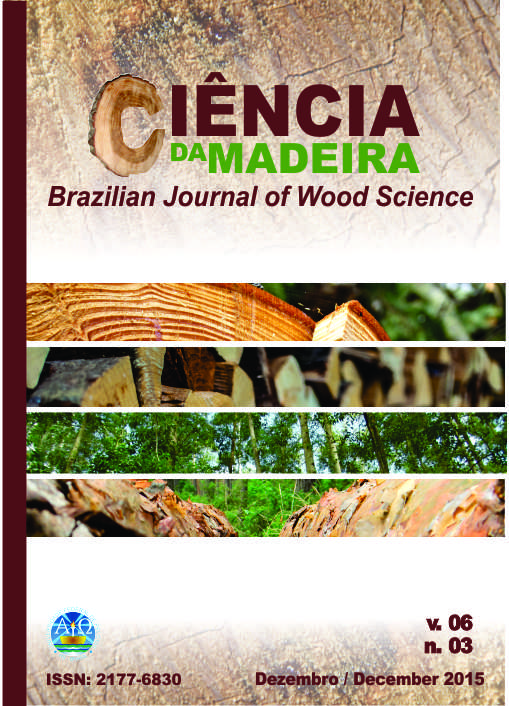NIR and anatomy of wood and charcoal from Moraceae and Euphorbiaceae species
Resumo
In Brazil, charcoal has widely use in the iron industry and plays an important row as a domestic fuel for traditional roast. The carbonization of illegal logged native wood simultaneously with planted exotic species demands ways to avoid frauds controlling the transport of charcoal. The aim of this study was to provide information on the anatomical characteristics of carbonized wood for Brosimum acutifolium, Ficus citrifolia, Hieronyma laxiflora and Sapium glandulatum and test the potential of near infrared in discrimination of species in charcoal based on solid material. Samples from pith to bark were oriented in the three anatomical planes, wrapped in aluminum foil and carbonized in a muffle furnace, with a final temperature of 450 °C and a heating rate of 1.66 °C.min-1. Infrared analyzes were performed in a Bruker Tensor 37 spectrophotometer equipped with an integrating sphere and operating in reflectance mode in a spectral range of 10,000–4,000 cm-1. Qualitative anatomical structure of wood remains in charcoal, and can be used to species discriminations. Near infrared can be applied for wood discrimination of some species from Euphorbiaceae and Moraceae, but in charcoal the distinction of family is more adequate.Downloads
Não há dados estatísticos.
Publicado
2015-12-30
Edição
Seção
Artigo Original - Edição de aniversário - 5 anos
A CIÊNCIA DA MADEIRA resguarda o direito de modificar o trabalho em quaisquer hipóteses na ordem gramatical e ortográfica com o objetivo de manter a utilização correta da língua portuguesa ou ingles.
A CIÊNCIA DA MADEIRA passa a possuir o direito sobre todos os trabalhos enviados quanto a reprodução e publicação online.



 https://orcid.org/0009-0007-3945-9715
https://orcid.org/0009-0007-3945-9715